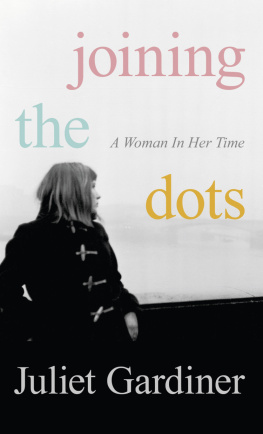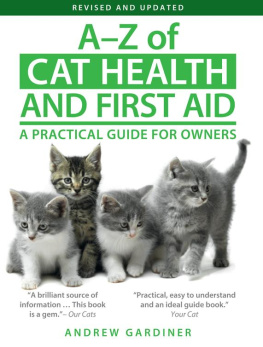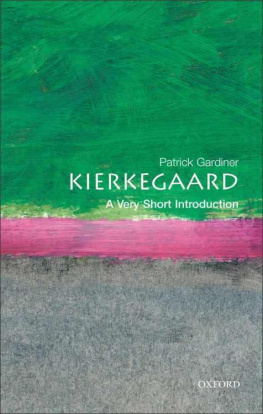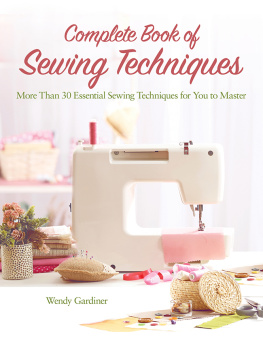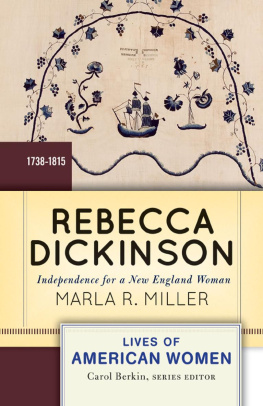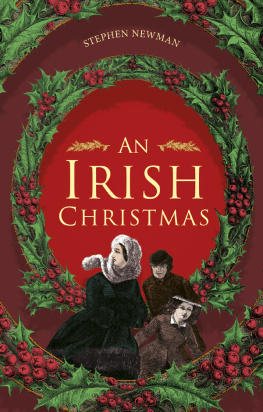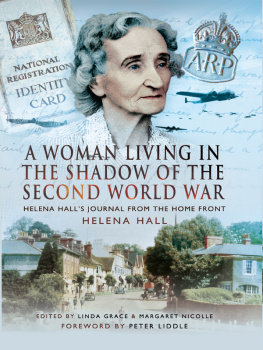William Collins
An imprint of HarperCollinsPublishers
1 London Bridge Street
London SE1 9GF
www.WilliamCollinsBooks.com
This eBook first published in Great Britain by William Collins in 2017
Copyright Juliet Gardiner 2017
Cover image shows Juliet Gardiner gazing over the Thames towards Waterloo Bridge, 1962
Extract from Having a Baby from Collected Poems by Allan Ahlberg (Puffin, 2008). Copyright Allan Ahlberg, 2008. Reproduced by permission of Penguin Random House UK.
Diana Words and Music by Paul Anka 1957, reproduced by permission from Pamco Music Inc/EMI Music Publishing Ltd, London W1F 9LD.
Juliet Gardiner asserts the moral right to be identified as the author of this work
A catalogue record for this book is available from the British Library
While every effort has been made to trace owners of copyright material produced herein, the publishers will be glad to rectify any omissions in future editions.
All rights reserved under International and Pan-American Copyright Conventions. By payment of the required fees, you have been granted the non-exclusive, non-transferable right to access and read the text of this e-book on screen. No part of this text may be reproduced, transmitted, down-loaded, decompiled, reverse engineered, or stored in or introduced into any information storage and retrieval system, in any form or by any means, whether electronic or mechanical, now known or hereinafter invented, without the express written permission of HarperCollins.
Source ISBN: 9780007489169
Ebook Edition August 2017 ISBN: 9780007489183
Version: 2017-06-30
For Rudy and Sammy
Contents
A young woman wearing a navy-blue duffel coat and bottle-green stockings stood shivering in the vaulted booking hall of Bristol Temple Meads station looking uncertainly around her. It was 1 January 1960 and the woman was me. I was sixteen years old, and, using the money I had earned from delivering letters for the Post Office during the holidays (8 5s.) and writing amusing anecdotes to the letters page of Womans Realm, plus a Christmas present of a 2 postal order, I had run away from home.
It was the start of a decade that was to be momentous in changing Britains history, politically, economically, socially and culturally. Although of course I could not have foreseen that, nevertheless it seemed a suitably significant date on which to start a new life; to leave behind the pebble-dashed house in the home counties, turn my back on the minor girls public school and be a grown-up at last: independent, poised to achieve the freedom for which I had yearned for so long.
It was not, predictably, that simple. Progress over the next few years would be bumpy, interrupted, contradictory, frustrating. Dependencies transferred rather than jettisoned. But the world changed around me, as it did for most women in Britain and that is the story I want to tell. It is not only or entirely my story; not a straightforward chronological account of womens history, nor a history, disquisition, celebration or critique of feminism. Rather it is a series of reflections or meditations on some of the expectations and experiences that I, like many other women in Britain, had, or could have had, during the middle years of the twentieth century.
I am a historian, and I was there, and that is what this book is about. It has no claims to be comprehensive: some important aspects of the period will be left out, or touched on only briefly; others might seem peripheral or wilfully quirky, but to me they are emblematic of various aspects of womens lives and the perception of these lives both by the women themselves and by society more generally the education they received, the work they did; the frustrations they felt, cheek by jowl with the knowledge of widening horizons, the legislative, economic, social and intimate transformations of their lives.
It is essentially my story, the optic is mine, but to put it pretentiously, on many occasions my life could hardly fail to grind up against the arc of history, and when it did, I hope recounting that conjunction will ring true.
Chapter One
Although this new era started in 1960, my life began on 24 June 1943, just before the end of the Second World War.
I was a war baby born on Midsummers Day. The previous week the RAF had mounted a major bombing raid on Dsseldorf, part of the sustained Allied attack on the Ruhr, Germanys industrial heartland. Nevertheless, the end of the war in Europe was still almost two years distant, though the tide had begun to turn. At El Alamein, Montgomerys Eighth Army had secured Britains first military victory, defeating Rommels Afrika Korps in November 1942. The surrender of all German troops in North Africa followed in May 1943. Alamein had led Churchill, desperate for a morale-raising British success, to venture, This is not the end, it is not the beginning of the end, it is, perhaps the end of the beginning. His optimism seemed justified. By the summer of 1943 the Battle of the Atlantic was at last going the Allied way as well, with the killer packs of German U-boats succeeding in sinking fewer Allied ships.
For those on the home front in Britain, however, the war remained unrelenting. Although the intense nine-month-long Blitz had ended in May 1941, frequent raids continued. One lunchtime in January 1943 a single 500kg Luftwaffe bomb was dropped on Sandhurst Road School in Catford, southeast London. Thirty-eight children and six teachers were killed in the so-called Terrorangriff (terror raid). There were rumours of deadly new secret weapons being developed by the Nazis. These would materialise the following summer as the lethal V1 pilotless planes and V2 rocket bombs. Meanwhile rationing continued, and in many cases bit deeper.
It was a courageous and optimistic decision to have a baby at this moment. Apart from the practical difficulties of shortages of baby clothes, nappies, cots, prams, feeding bottles, teats and food, there was the uncertainty of bringing a child into a world when the map to the future had been torn up into jagged pieces. No one could know how long the fighting would go on, or what form it would take.
Shock and uncertainty about the future meant that the birth rate had fallen dramatically in the early months of the war. In 1941 it had reached the lowest point since records began: 13.9 per thousand of the population. When Peggie Phillips found out that she was pregnant in June 1941, she was pleased. But her husband, John, wrote from his army camp cautioning that much as we would like another baby [they already had two daughters] these are hard times, and it would be wisdom to be brutal and cut off this little promise of a life until the world is a little more settled and we could find some sort of assurance that this new little person could be cared for in a decent way.
This was the strongest argument, he suggested, for you going to the osteopath [an abortionist] Perhaps the most simple way of looking at it is that we ought to get rid of this little accident while it is early days yet and things havent gone too far: and we can always have the baby at another time (if it ever gets to be). I hate deciding the way I have.
Mrs Phillips took her husbands advice, raided the childrens saving accounts, and on the recommendation of a doctor whose eyes she didnt really trust, travelled to a discreet nursing home in Kent where she paid fifty guineas for an illegal abortion. Sadly another time never came, as John was killed in the battle of Monte Cassino later in the war.
Many other women had no choice but to be single mothers: they had been widowed by war. On the front page of The Times on the day of my birth, the list of those killed or missing in action is four times longer than the announcement of births. Some women had husbands, fiancs or boyfriends fighting abroad with no hope of home leave until the war was over.

